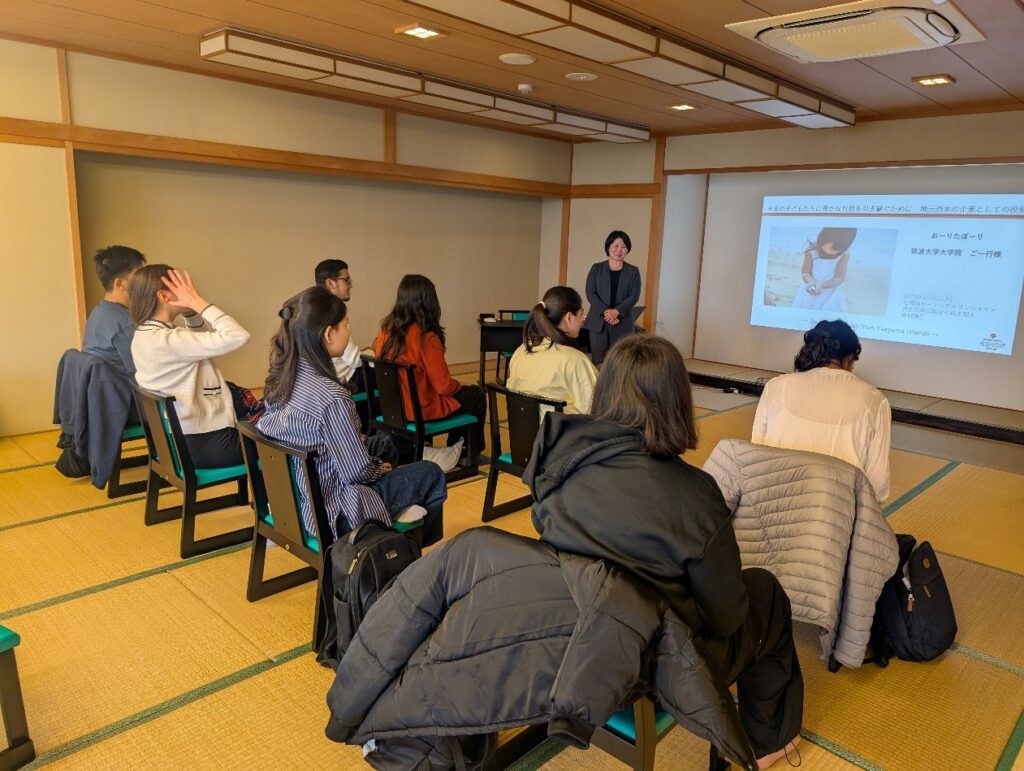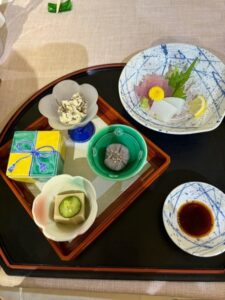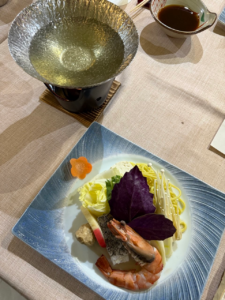Rashidova Rukhsora
For the first day of our trip, we had the pleasure of staying at Ishigakijima Beach Hotel Sunshine, which is known for its efforts to contribute to sustainable tourism and was officially registered as an SDG Partner of Okinawa Prefecture in 2021. Upon arriving at Hotel Sunshine, I was immediately struck by the breathtaking ocean view and the sense of harmony between the hotel and nature. But more importantly, I began to pick up on hints of the hotel’s SDG commitment in various aspects of its management and services. Interestingly, the hotel didn’t start this way. Its transformation has been shaped by history and changing circumstances. Here’s a brief look at its past, as told by the hotel’s owner. Ms. Akagi, who inherited the business from her parents.
Situated on the western coast of Ishigaki Island, the hotel was once surrounded by numerous trading ships passing by, creating a lively and bustling environment. However, since 2008, particular circumstances by contract led to a decline in trade activities in this area. As the sea gradually cleared of ships, it revealed the untouched beauty of the night sky. This shift became a turning point, inspiring Ms. Akagi to embrace a more nature-focused concept.
This concept aligns with the SDGs, contributing to sustainable tourism. In terms of balancing local economic development with environmental conservation, it is worth noting that the hotel prioritizes local companies when selecting suppliers, thus promoting local production and consumption.
Another example of its commitment to eco-friendliness is water management: the hotel uses filtration systems to purify water before safely discharging it into the ocean. To maintain and green the hotel’s garden, they refrain from using herbicides, instead opting for natural acids—such as Shimatogarashi pepper, a hot spice—to prevent chemicals from polluting the sea or rivers.
When it comes to waste management, it is the business owner’s responsibility to dispose of garbage properly. Efforts to reduce plastic waste can be noticed in the introduction of the ‘Picking Up Amenity Corner,’ allowing each guest to choose only what is necessary and reflect on sustainable consumption. Additionally, instead of providing mineral water in plastic bottles in guest rooms, a water server has been installed in the hall.
Taking into consideration the subtleties of traditional cuisine reflected in the restaurant’s menu—often regarded as a healthy and environmentally friendly feast—the hotel ensures that food waste is carefully managed. As part of its future goals, it plans to transform food scraps and leaves into organic fertilizer to cultivate ingredients in its own garden.
What impressed me most was how a popular tourist activity like stargazing can also promote energy conservation. Interestingly, the Yaeyama Islands were the first in Japan to be designated a starry sky sanctuary, which led to light pollution control measures in the northern part of Ishigaki Island.
Although not located within a designated protected area, this hotel has voluntarily implemented special lighting measures to minimize light pollution. By using specialized lamps, it ensures that guests can enjoy breathtaking night skies while also reducing unnecessary energy consumption and preserving the natural environment.
Our visit to Ishigakijima Beach Hotel Sunshine was an inspiring example of how hospitality can align with sustainability. Ultimately, Ishigakijima Beach Hotel Sunshine is more than just a place to stay—it offers a glimpse into the future of tourism, where environmental stewardship and cultural appreciation leave a lasting and meaningful impact.






